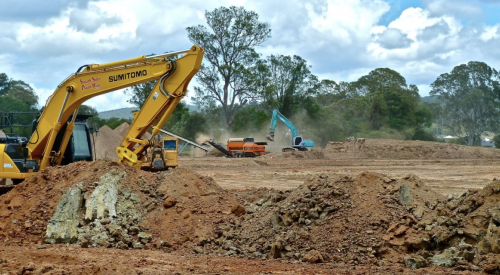|
Chuck Shinn, President, Lee Evans Group
cshinn@ leeevansgroup.com
|
Soaring land prices the past several years have spurred more builders to enter raw land acquisition and development for the first time. Be careful. Development really is a different business. Don't go into it without doing your homework and probably adding an experienced land person to your staff.
Because land prices have become so high, and risk increases right along with price, some builders have adopted the smart strategy of forming a consortium to acquire and develop raw land. Typically, they divide each parcel into neighborhoods of different product types and price ranges to minimize direct competition with each other and increase lot absorption. This spreads the risk of carrying a large landholding in a weakening market among multiple companies.
Now Is Not the Best Time
If this is the peak of the market, builders would be better off maintaining high liquidity and lower debt rather than holding large land inventories. Land has been the downfall of countless builders during soft housing markets. Land inventories and associated debt service can strain cash flow.
Of course, this is easier said than done during a land feeding frenzy. It's hard to avoid clammy palms and heart palpitations when sales are outpacing additions to the lot inventory and new lot costs make your current pro forma and pricing strategy obsolete.
Profitability starts with the land purchase. Our target ratios show that cost of sales should be held to 70% of the purchase price - 50% for hard costs of construction and 20% for the lot. So it's almost impossible to recover from a mistake in a land buy. However, as builders unfamiliar with the land business move into development, they often make mistakes that threaten profitability and even company survival. One of the worst is to mingle land and home building in one profit center or company - land and home building profits should be kept separate. Another is to push too fast on land without an adequate option period for necessary due diligence. The worst, of course, is to pay too much for raw land relative to the market price of the housing you can build on it.
Tie Land Strategy to Business Plan
Rather than reacting to market conditions, builders should tie their land strategy to their five-year business plan, so land keeps coming on line as needed, and knee-jerk land buys are avoided. Too often, such decisions are emotional. Then, land parcels don't fit the business plan, forcing the company to go into unplanned markets and product lines outside its core competencies.
Land strategy should be a rolling analysis of land needs during the next five years, by product line and market area. This includes finished lots, lots under development, entitled land ready for development and (finally) raw land. The amount of land needed in each category depends on the sales pace, the timing of land development activities (critical in northern climates, where winter conditions close asphalt plants from fall to spring) and the length of the entitlement process.
Builders should review a land inventory status report with their management team monthly. This report should include not only the number of lots controlled but also the status of the pipeline for each product line and market area - with monthly projections of need relative to the current sales pace.
Next month: an example of how to do this.
|












